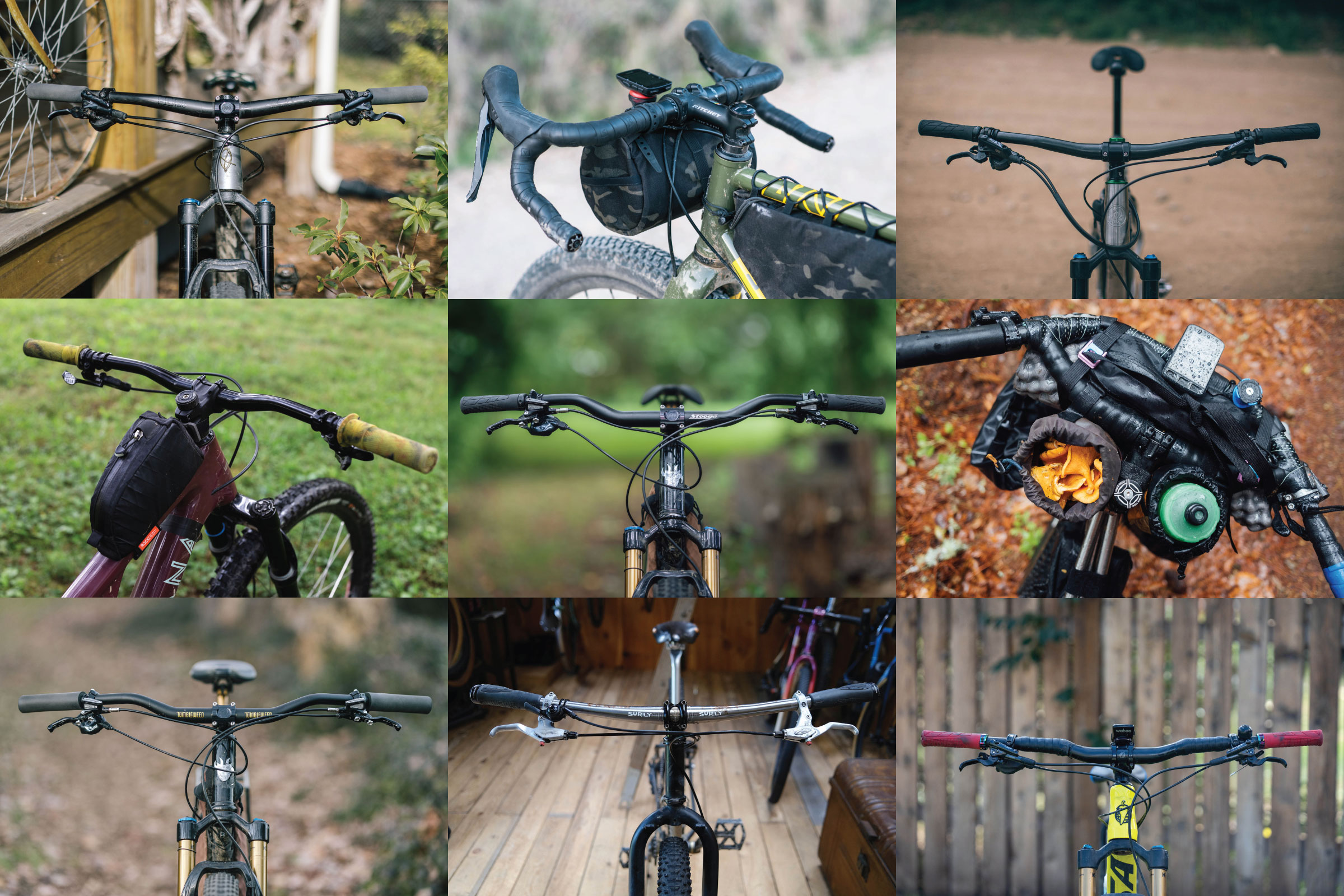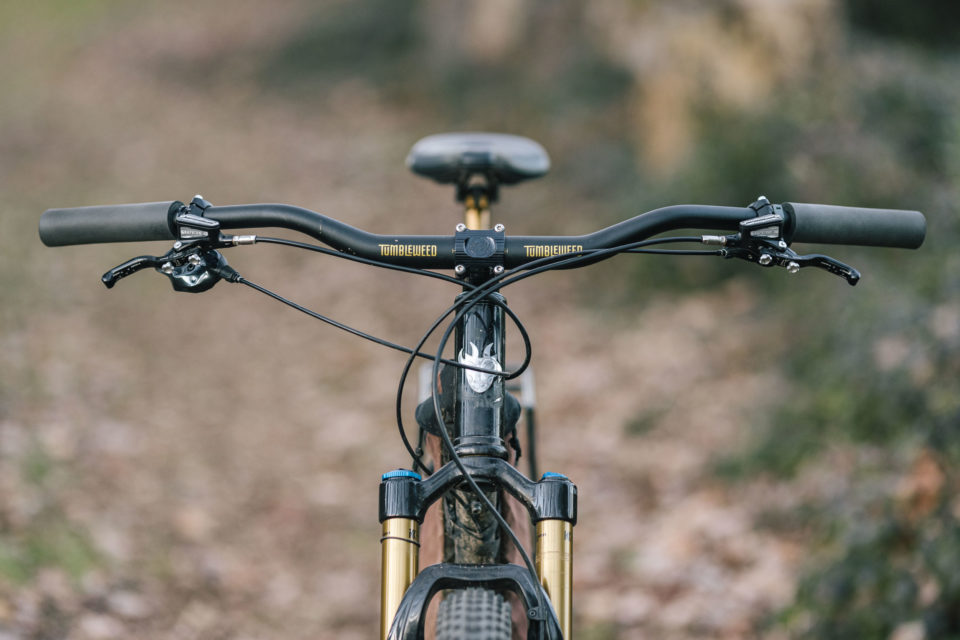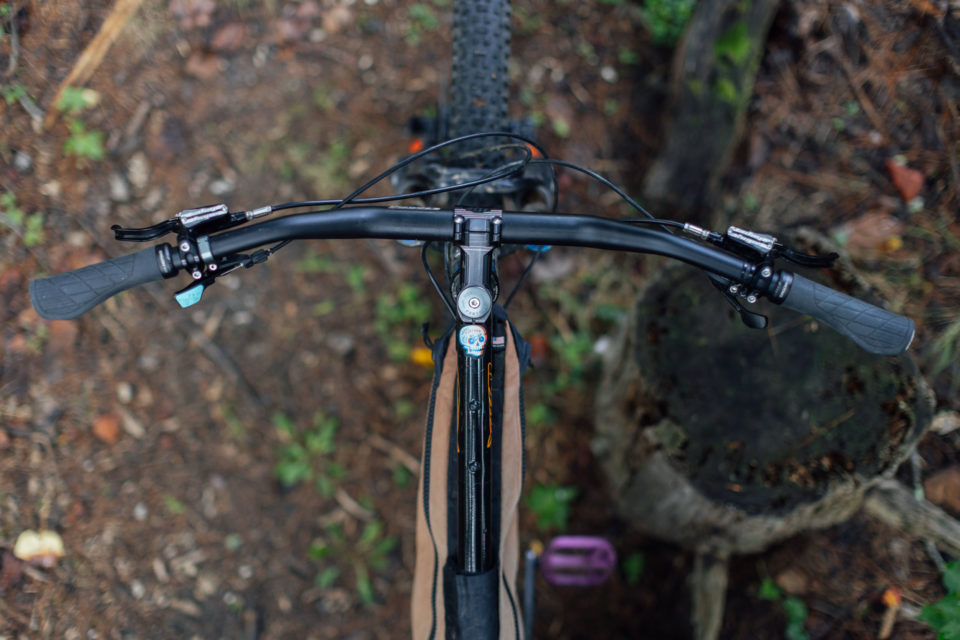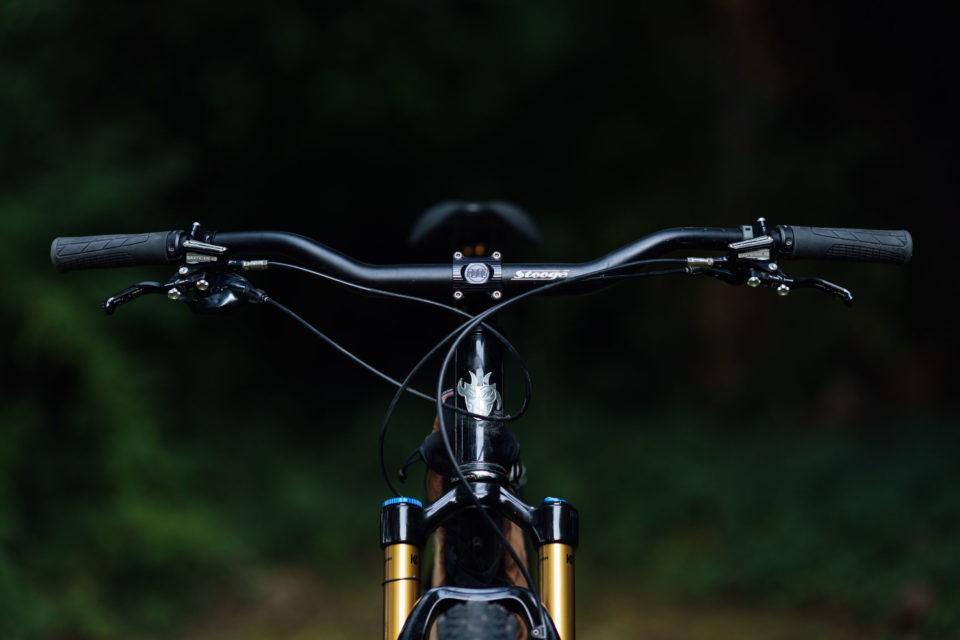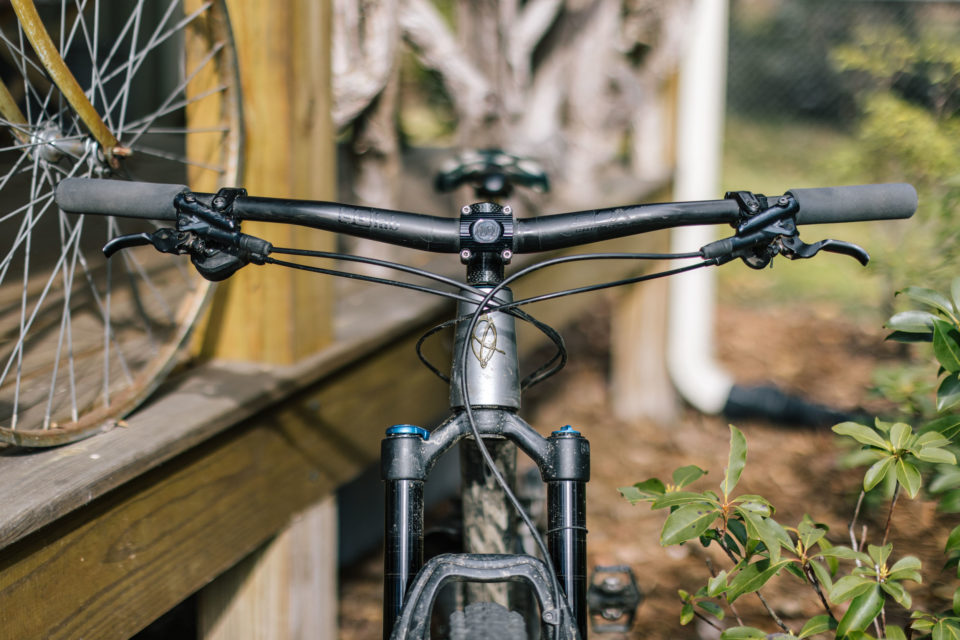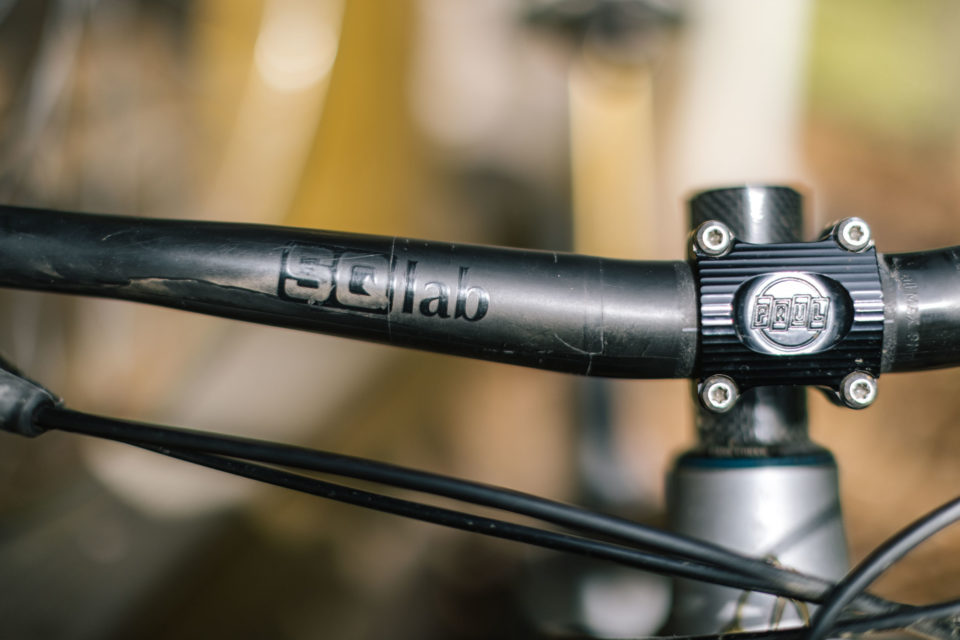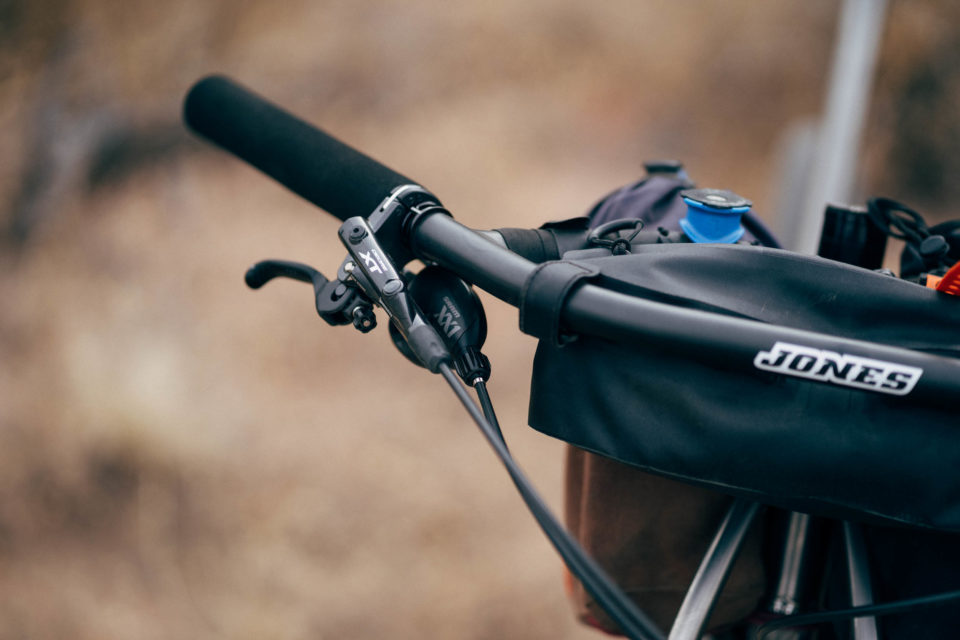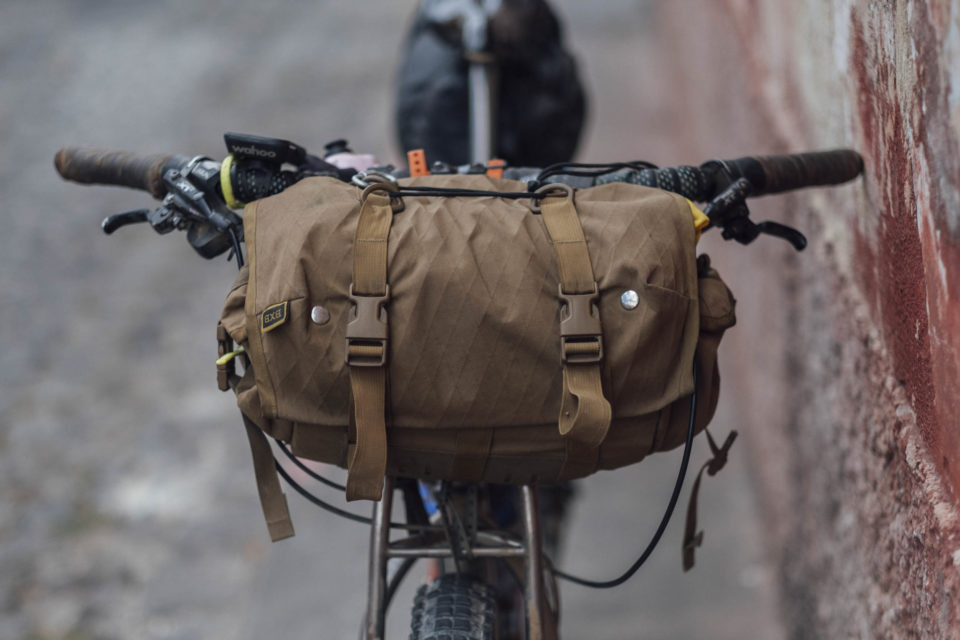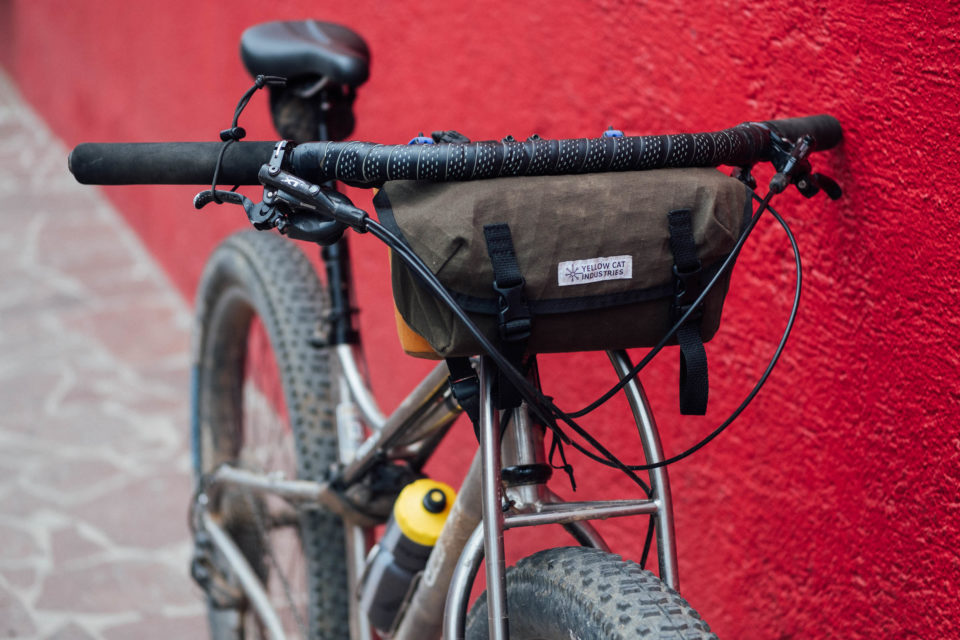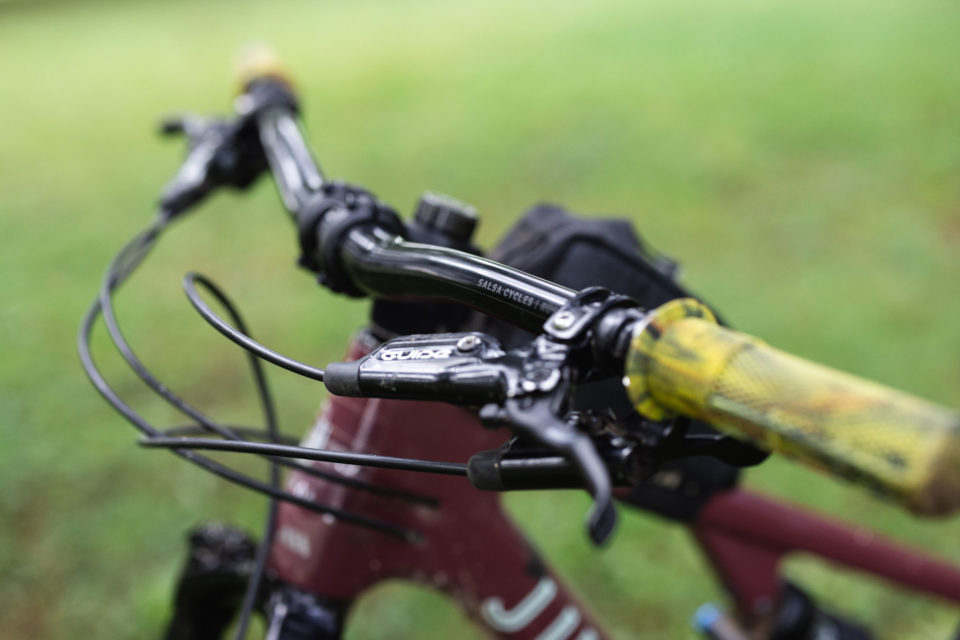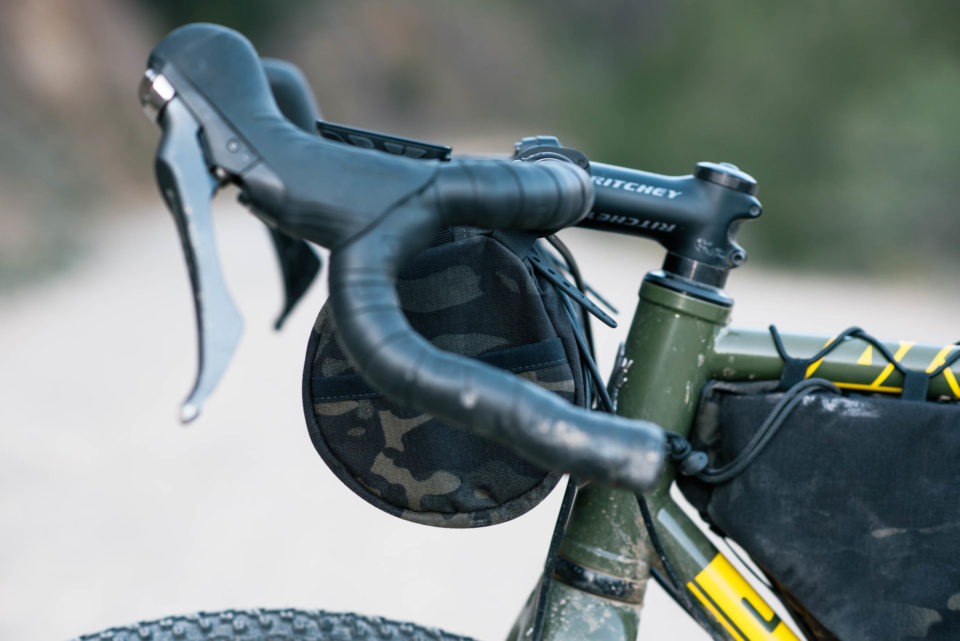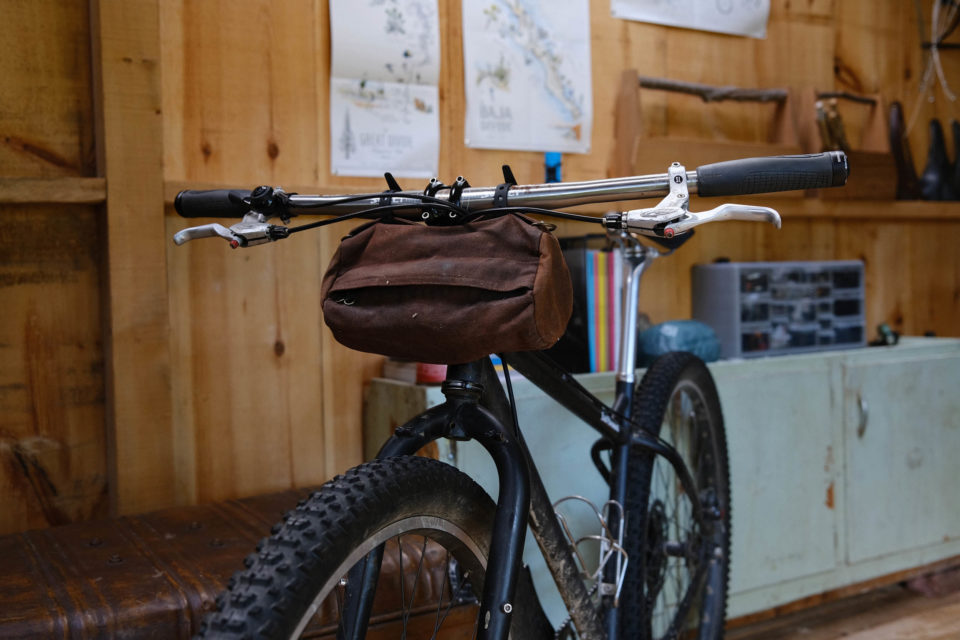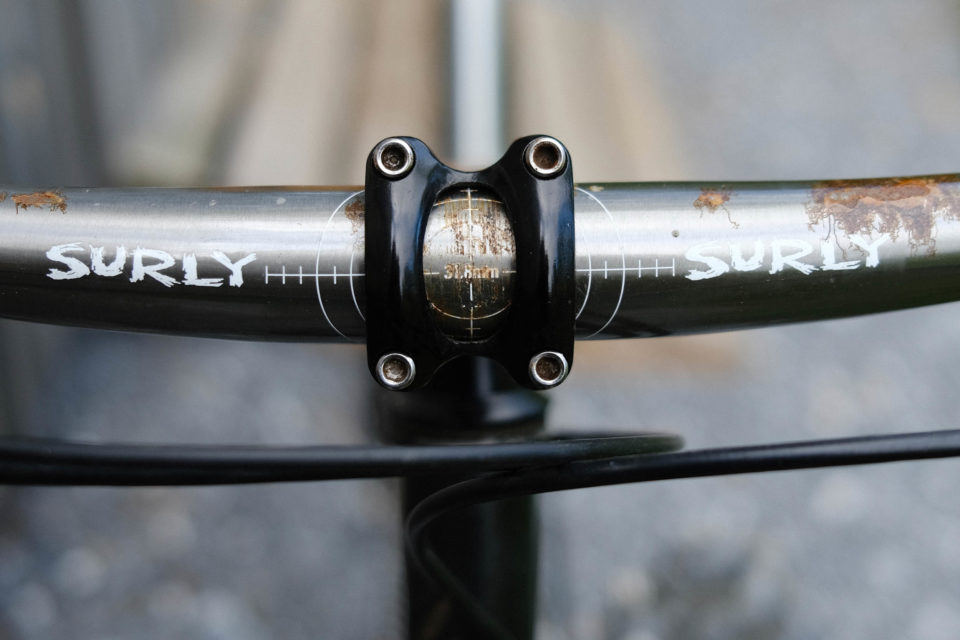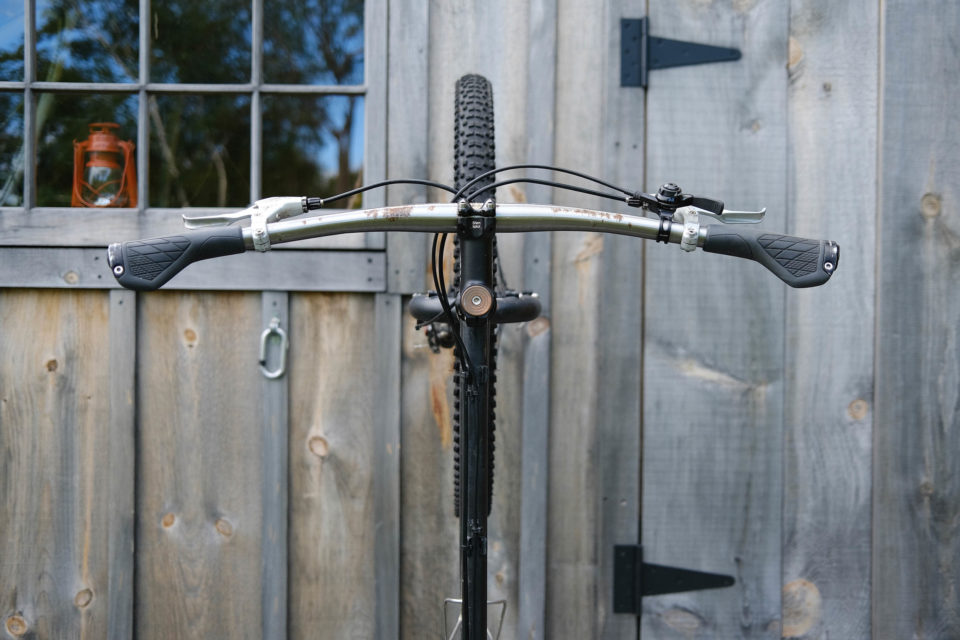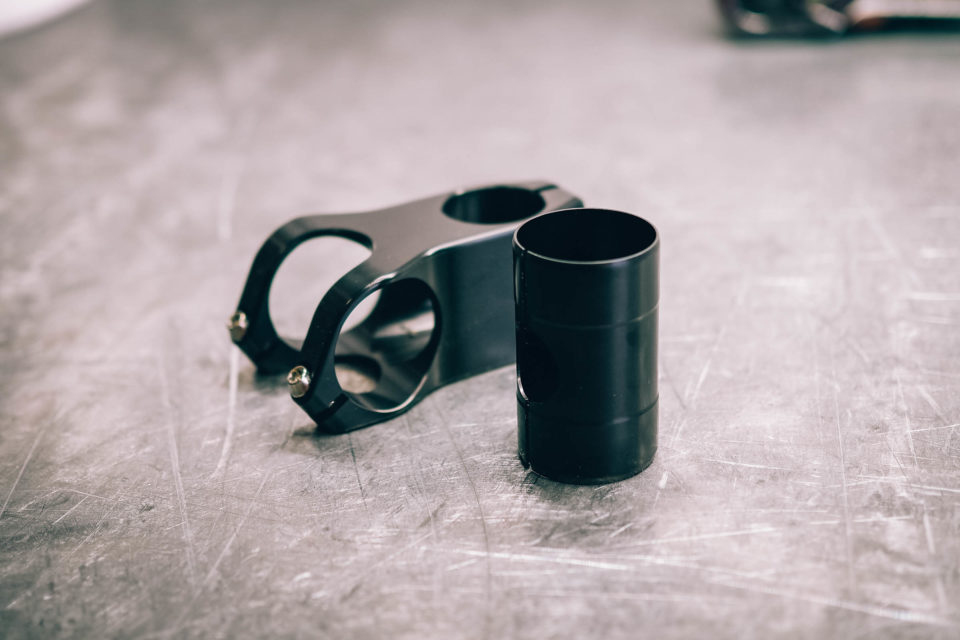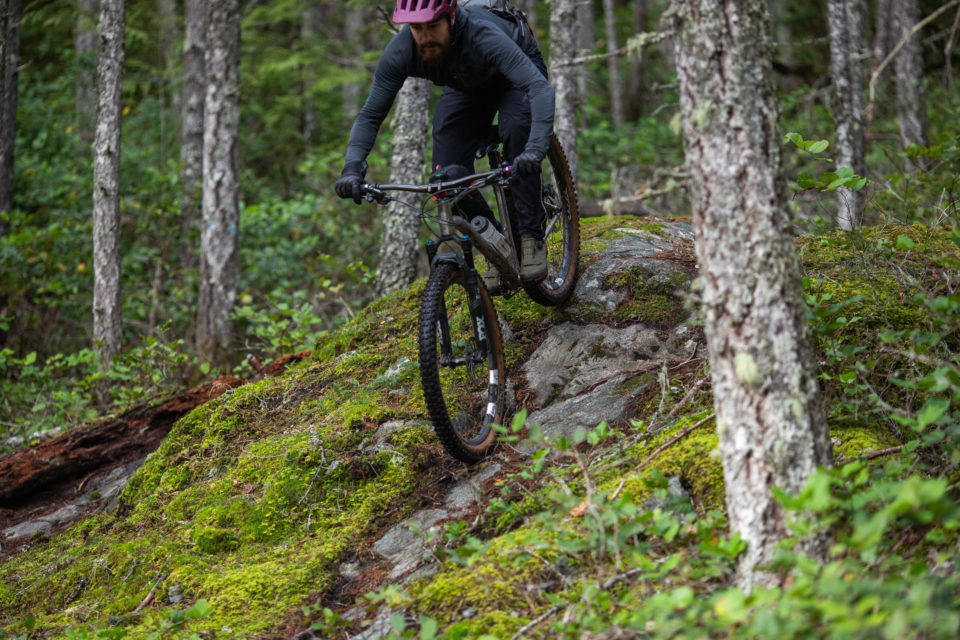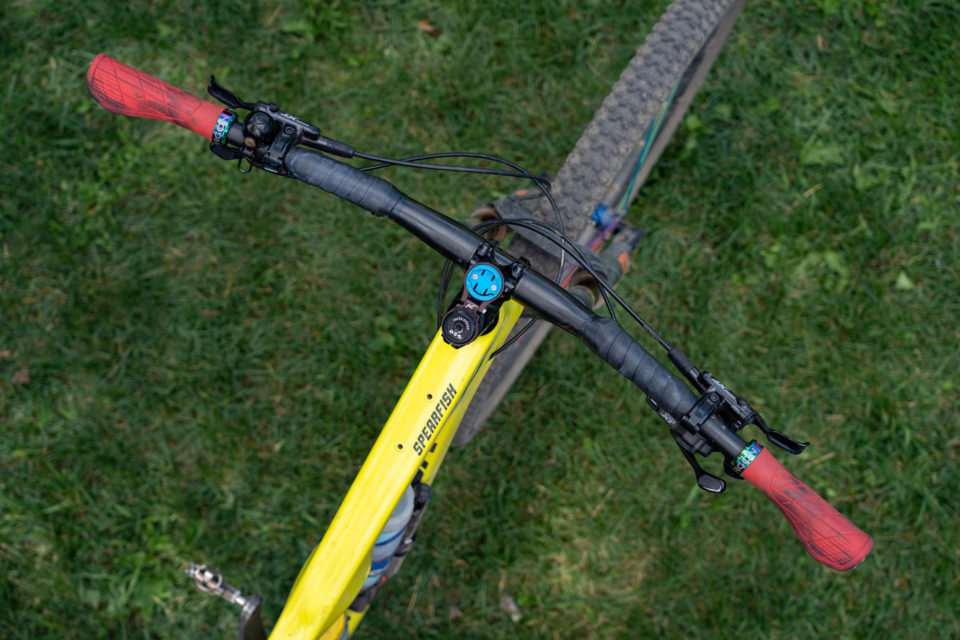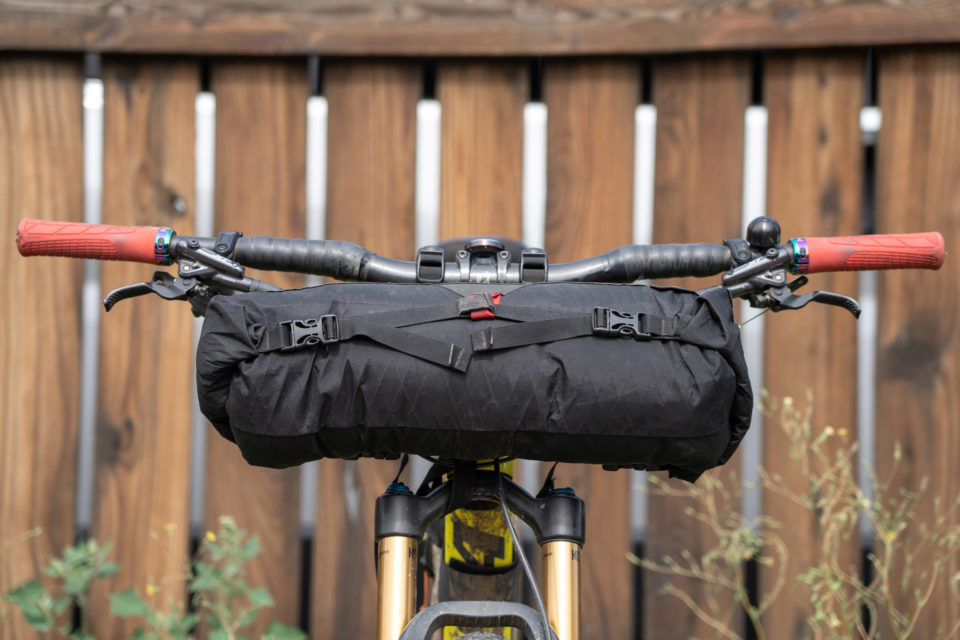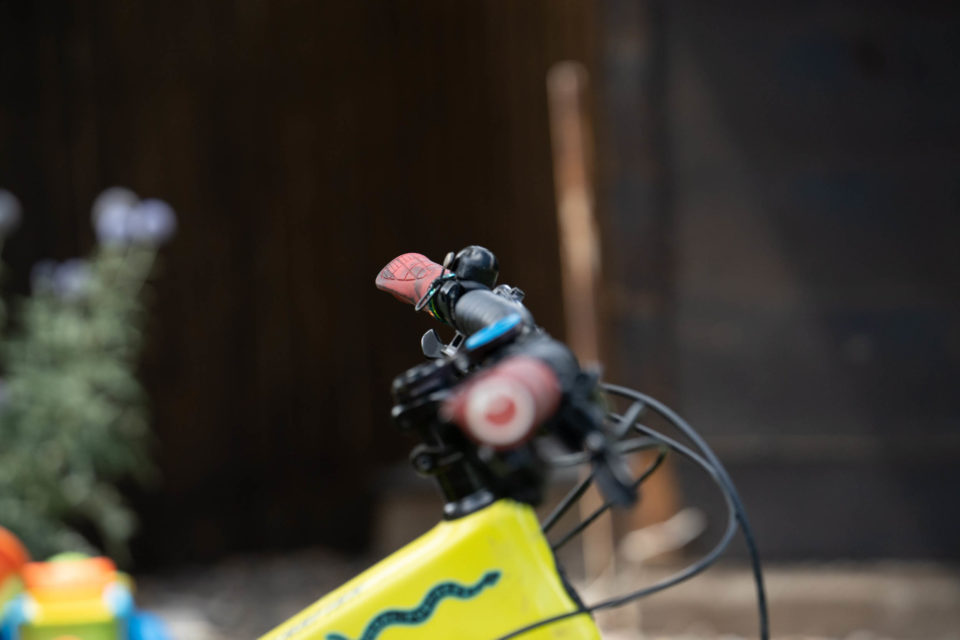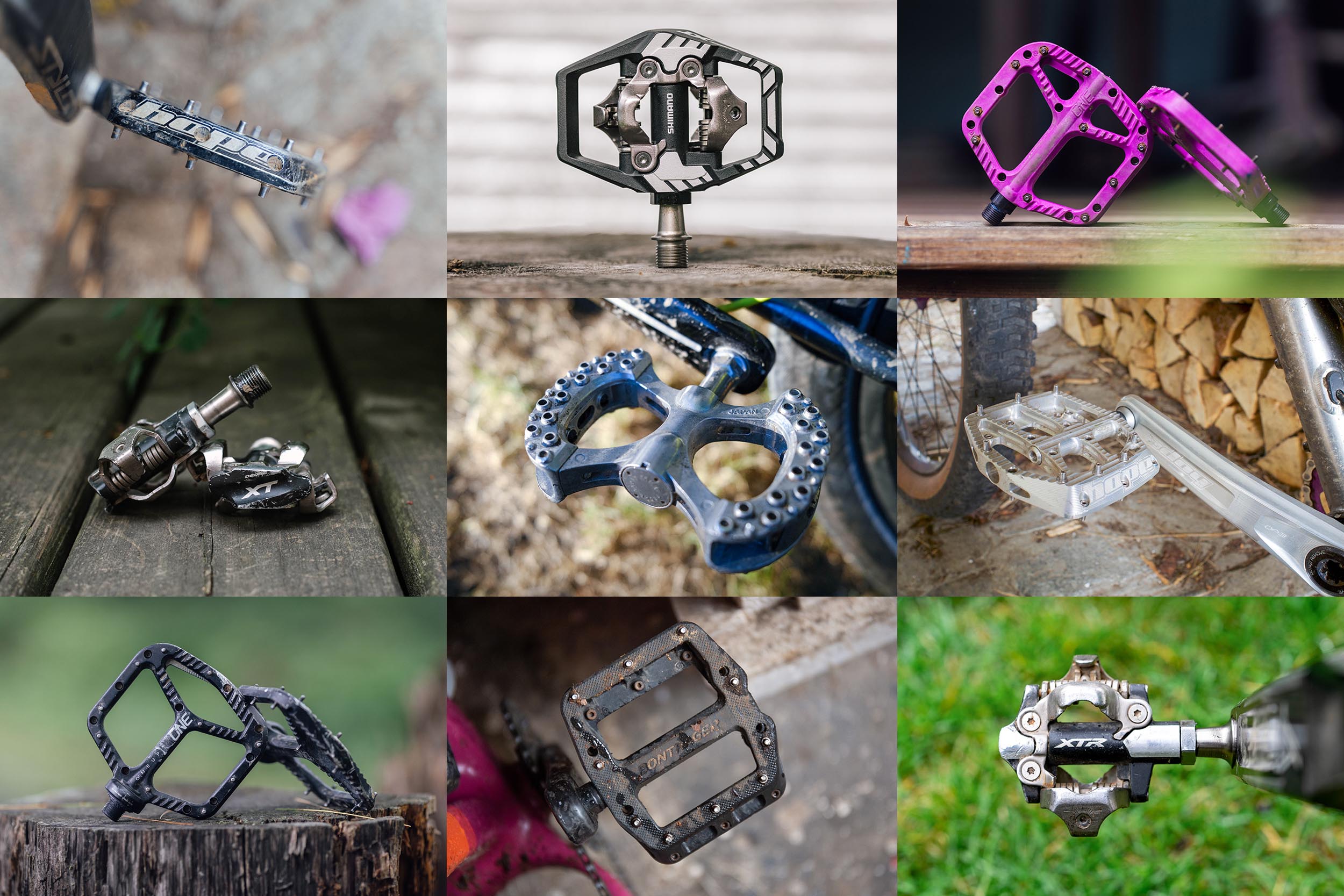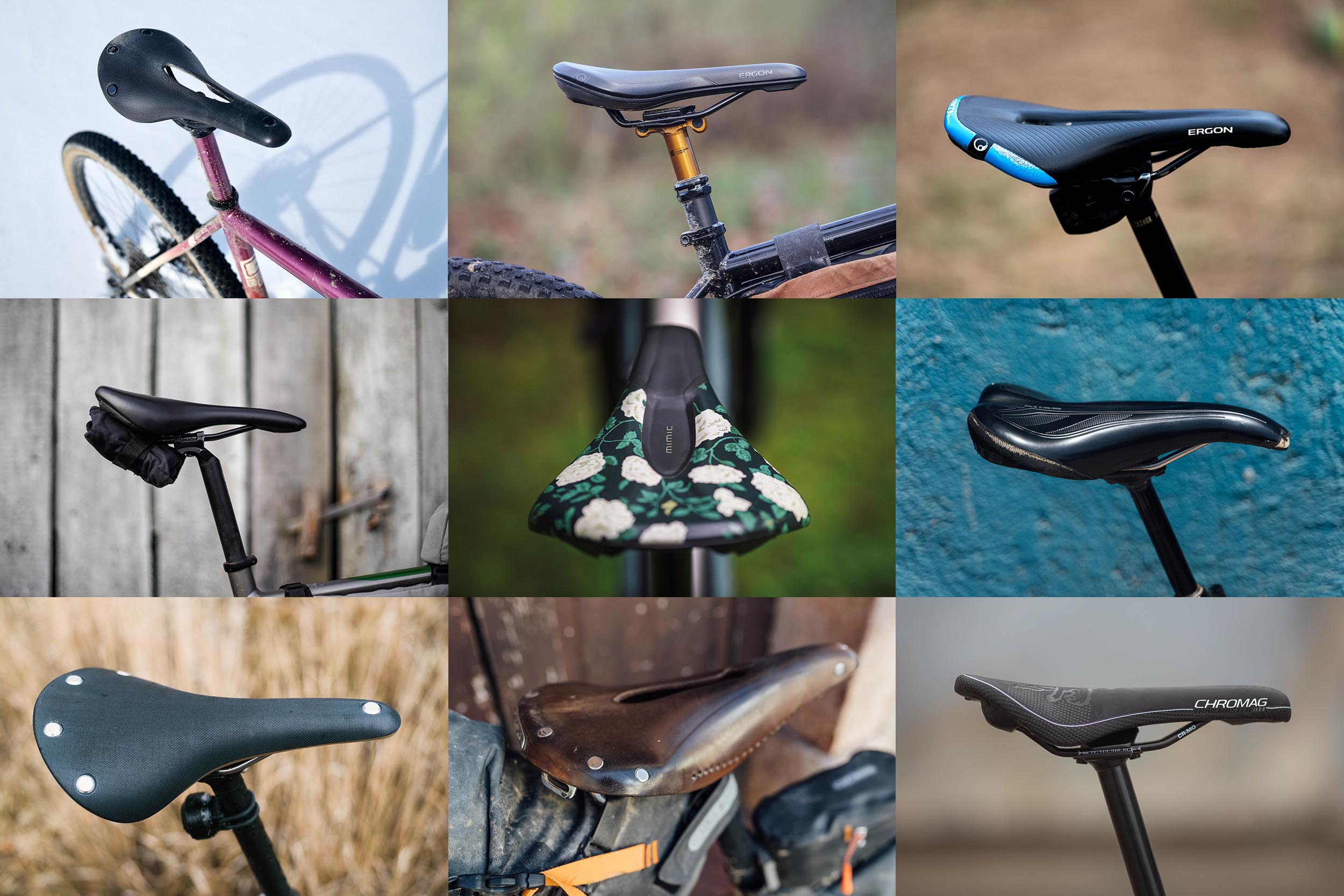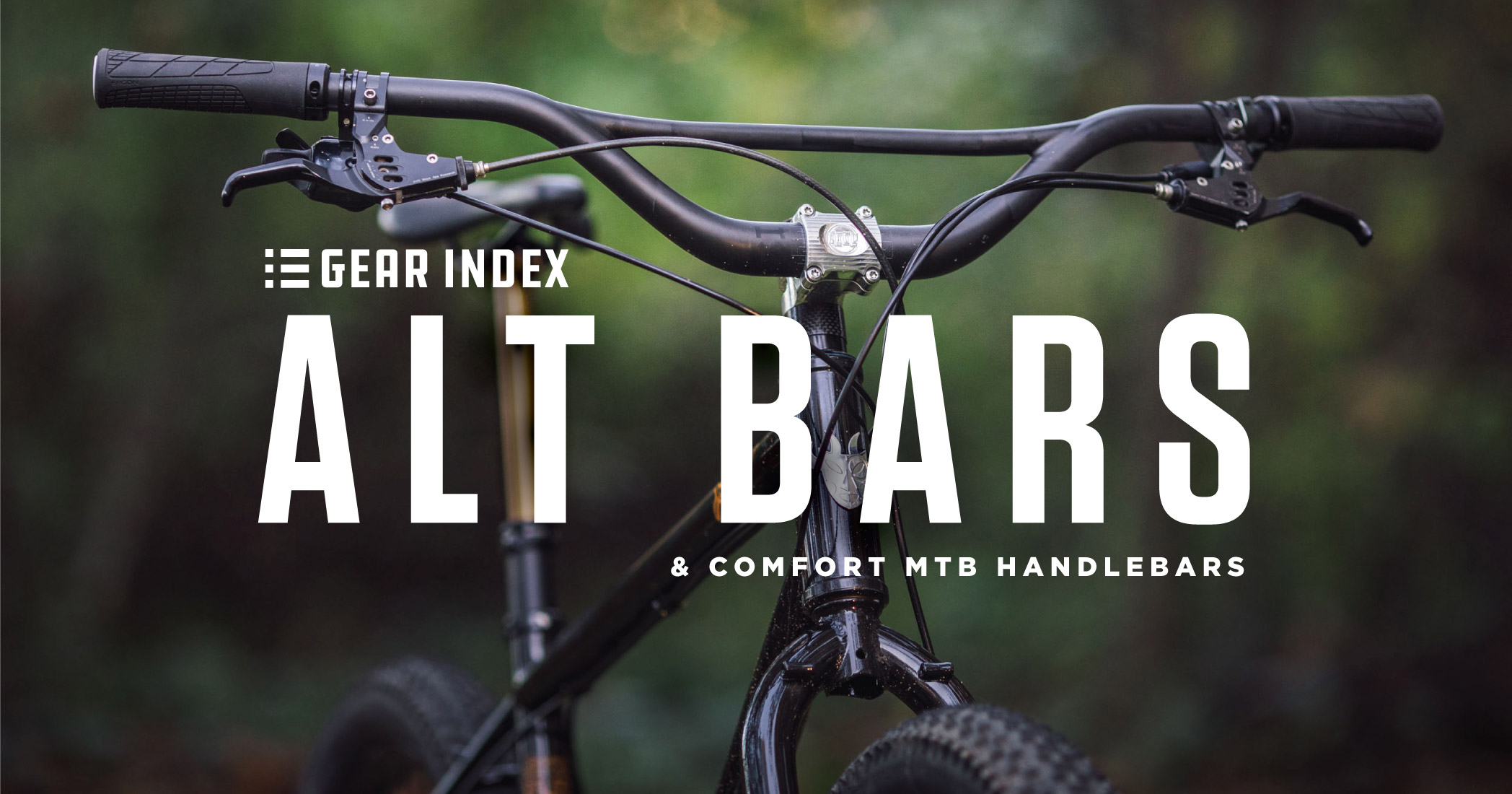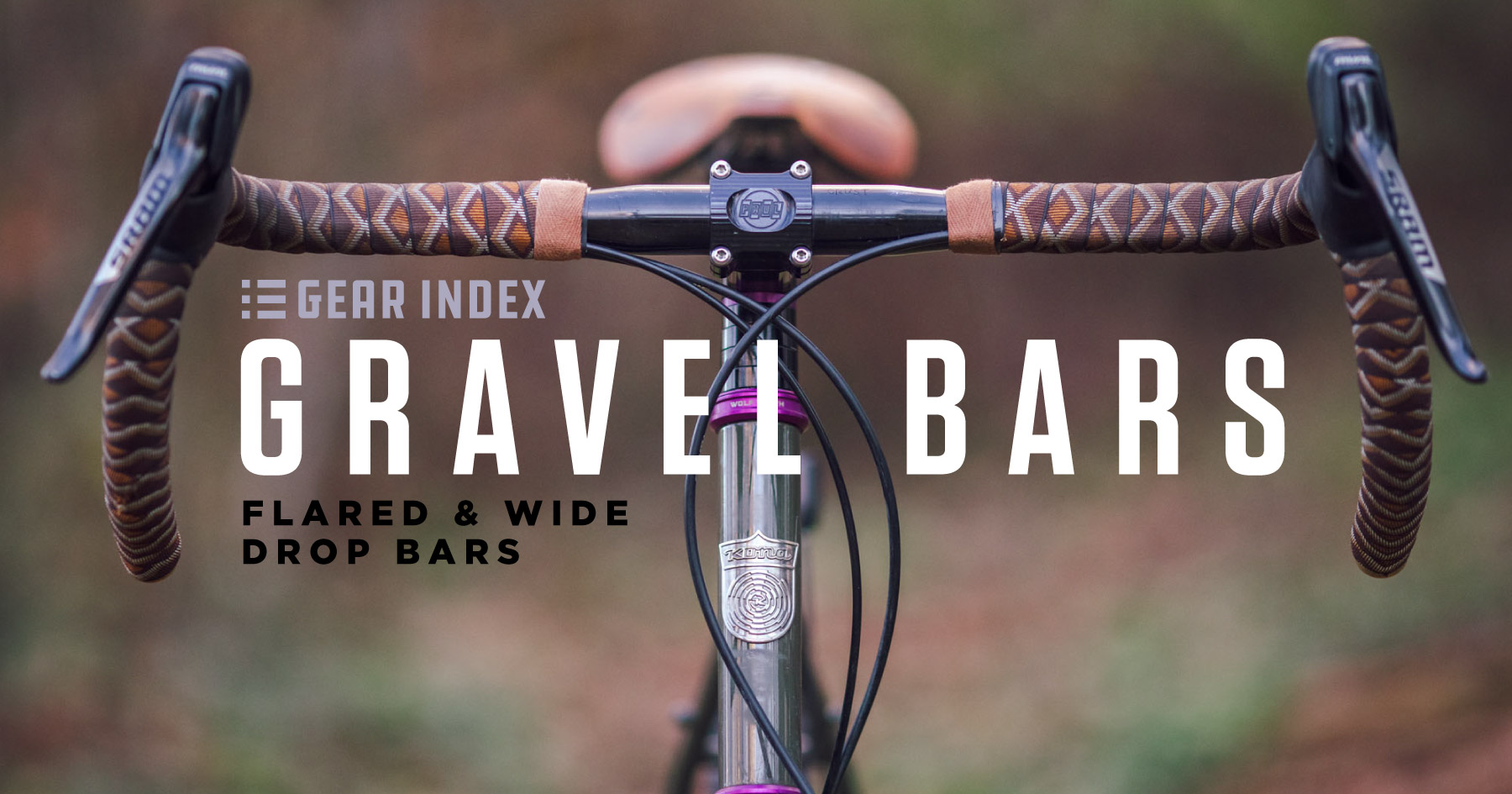The Best Handlebars for Bikepacking and Touring? Our Editors’ All-time Favorites
Share This
In our ongoing Decade in Review series, we take a deep dive into the site’s 10-year archive and look back at the gear we’ve tried along the way, choosing our all-time top picks in a variety of categories. This time around, we share a our favorite real-world, trip-tested handlebars for bikepacking and bike touring. Find the full list here…
We’re celebrating BIKEPACKING.com’s 10-year anniversary this year. In doing so, we’ve concocted the Decade in Review series in which we ask our editors and a rotating cast of friends to reflect and share their all-time favorite gear from the hundreds of options they’ve tested over countless kilometers on dirt roads and rugged singletrack. Following up on our roundups of favorite pedals and saddles (find those linked at the bottom of this post), we’re diving into another highly personal touchpoint: the best handlebars for bikepacking.
Like saddles, handlebars are kind of a personal preference, often based on physiology, riding style, and what makes each of us comfortable. They’re also something many of us have struggled with over the years, even resulting in needing surgery when attention to bike fit was ignored. Obviously, it’s ideal if you can experiment with what works for you, but we thought it might be valuable to hear from a group of folks who’ve tried a lot of options to see why and where they ended up.
Find our time-tested list of what we consider the best bikepacking handlebars for bikepacking below, including details on where each set is made, pricing, thoughts on what makes them stand out, links to find more details, and a few photos of each. Note that many of these handlebars are available at your local bike shop, and we encourage you to buy them there if you can. If you don’t have access to a local shop, we’ve included links where they’re available online.
Stooge Moto Bars, and…
Logan Watts link
Made in Taiwan / 361 grams / £66 at Stooge
Picking a favorite pair of handlebars is a tough ask for me. I was just telling someone about my collection of bars that I have crammed into an oversized filing cabinet drawer. It’s nice to have options, and I often pick and choose based on bike fit. The long and short of it is that I really like wide bars—between 800-820mm—with a moderate 16-30° backsweep. I feel that range offers a great balance of comfort and control. There are three that I’d consider my favorites for mountain bikes and bikepacking at this point: the Tumbleweed Persuader, Doom Bikepacker’s Delight, and Stooge Moto Bar.
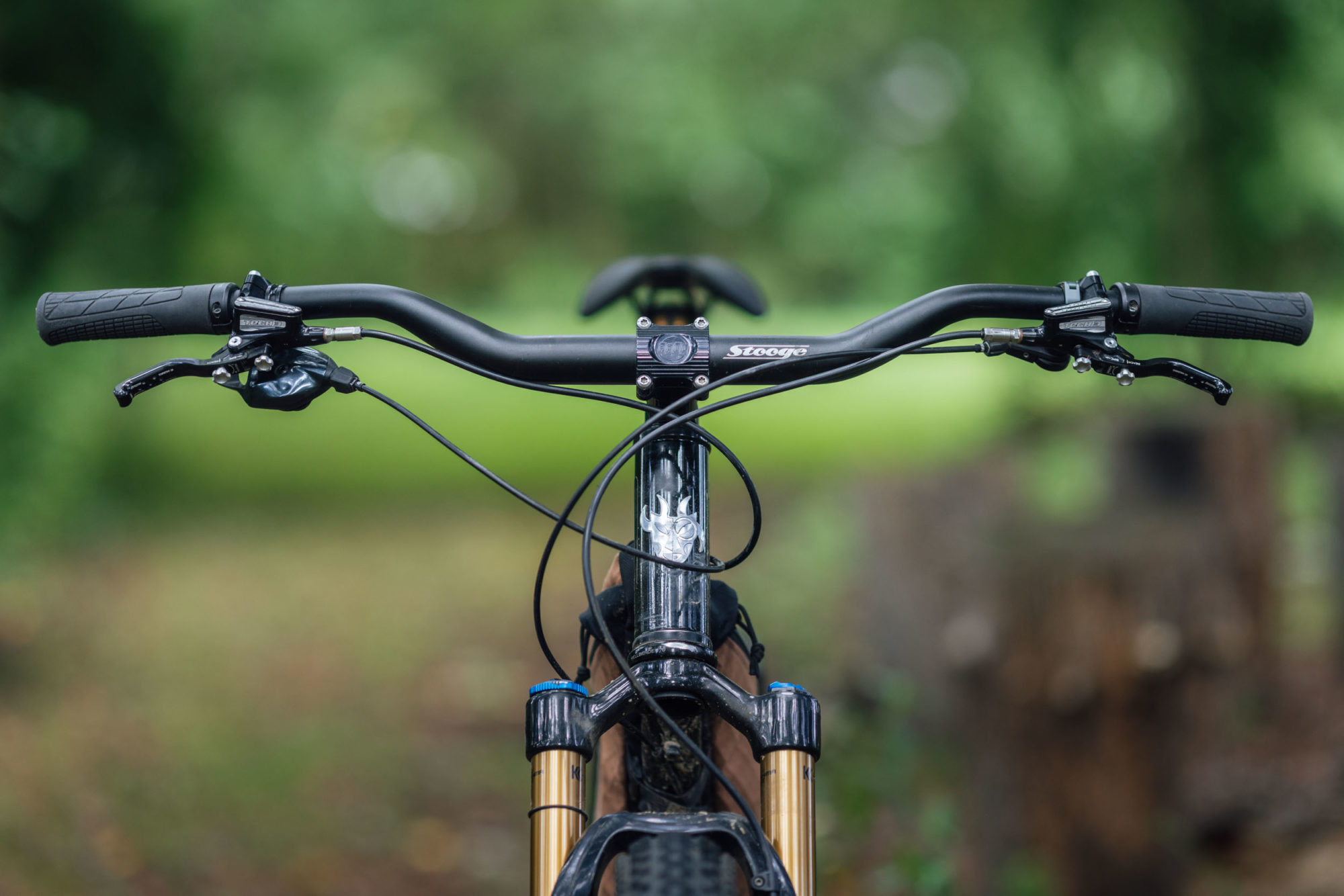
There’s one trick to it though; mountain bikes that seem to fit me well have a really long reach and a relatively low stack—my Nordest and Cotic hardtails are both good examples. That means that the bars I want to like don’t always work. The high-rise Whisky Millhouse is a good example. Its 16° backsweep and 825mm width are great, but the 70mm rise and 8° upsweep make them a little too high for me with most bikes. I successfully incorporated them on one build but have yet to have another bike with a low enough stack height to make them work.
To maintain that fit without having to use a laughably long stem, bars need to have a relatively low rise and a shallow backsweep. I love the Tumbleweed Persuader, but the 30° backsweep pushes my hand position back a little too far; I’m waiting for the right bike for that one. In the meantime, I’ve been using the O.G. Stooge Moto Bar (above) quite a bit and find that it ticks a lot of boxes. I’ve ridden it on a trail bike, bikepacking, and everything in between. Its moderate 17° backsweep an 38mm rise keep the bike fit in check while offering a nice comfortable hand position. And, the wide clamp area is not only perfect for bag straps and accessories, it keeps the backsweep from having too much of an effect on the general reach. Note that I also recently got a New Mexico-made steel Doom Bikepacker’s Delight that I really like. Stay tuned for that review.
SQlab 30×16° Carbon
Virginia Krabill link
Made in Taiwan / 235 grams / $214 at AMZN SqLabs
After carpal tunnel surgery and ongoing wrist and hand issues, I knew I needed to make some changes. I worked with a physical therapist and mountain bike skills instructor who provided a couple of recommendations specific to fit and components. Two of these recommendations were to use a handlebar with a moderate backsweep and foam grips. The SQlab 30×16 bars came highly recommended.

SQlab offers numerous ergonomically designed handlebars in both aluminum and carbon, sporting a broad spectrum of sweeps and rises. The 30×16° medium rise bars are really comfortable and likely to suit those who prefer the control that comes with a more typical trail handlebar versus alt bars with extreme sweep. These bars feature a 16° backsweep, 4° upsweep, and 30mm of rise. The backsweep allows for a more natural, aligned transition from the lower arm to the wrist, thereby alleviating some of the nerve compression that straight bars can create. While I’ve found the 16° backsweep to be quite comfortable, I would be curious to try the 12° bars, as they are marketed toward riders with more upright positioning. Riders can further dial in their fit by choosing a different rise. The 30mm work well for me, but the bars also come in 15mm or 45mm options. The carbon version weighs in at only 235g and provides the added benefit of additional vibration dampening. Overall, I’ve been really impressed with these bars, although I will say that after numerous jarring crashes, having carbon bars makes me a bit nervous.
Jones H-Bars
Cass Gilbert link
Made in Taiwan / 525 grams (Loop 710) / $85+ at Jones
Like many bicycle experamentalists, I have a wide selection of handlebars that I’ve enjoyed over the years: Tumbleweed’s Persuador, Oddity’s Razorbar, and SQlab’s 30×16 (with inner bar ends), to name a few. But if I had to pick my very favourite of the decade, it would have to be the Jones H-Bar in a 710mm width. In part, this is because I’ve mostly ridden Jones bikes for the last few years, and H-Bars form part of the brand’s holistic vision of the ‘perfect’ fully rigid mountain bike. But there’s no reason why they don’t work well on other bikes too.
I like both the H-Bar Bend and the H-Bar Loop. I find the former easier for running top access bags, like a BXB Goldback. It’s more affordable ($85), it’s light (325g), and I also have the sense that if offers more ‘give’. The latter, with its iconic loop, offers bonus hand positions, has real estate for electronic gadgets galore, and also acts as a minimal brace for a lightweight tent, in tandem with just a couple of additional straps (Austere Manufacturing’s Cam Utility straps are great for this). Given that the empty ‘loop’ is crying out to be filled, there are some useful bag accessories too, like Jones’ own H-Bar Pack, Rockgeist’s Dr. Jones Bag, and Randi Jo’s Jeff ‘n Joan’s Bag. Either way, I run extra long grips (ESIs are my favourites) so I can nudge my hands forwards and backwards, depending on terrain and the body position that I’m after. I tape up the handlebars all the way round, so I have extra spots to rest my hands, and to protect them from scuffs.

The H-Bars’ 45° sweep initially feels very extreme when you first try them, but given time, I think many long-distance riders will appreciate how effectively they serve to lessen pressure on the wrists. The bars can be used on any bike, but they work especially well on Jones bikes, due in part to their short reaches, encouraging you to make full use of the handlebar’s long grips. In fact when I first tried a Jones bike, I was surprised at how much control these bars offer over rocky trail riding, and not just as a comfy setup for cruising and touring, as is often assumed.
One downside to H-Bar is the angle at which the cables exit the brake lever – especially with mechanical setups. If you’re running a relatively wide bag it can be hard to avoid cable kink. Aside from the choosing between Bends and Loops, there’s also a variety of materials to suit your budget – straight gauge aluminium, butted aluminium, titanium, and carbon (which is just 235g). And there’s a version with a 2.5″ rise too, if your fork steerer is cut short and you prefer a more upright rising position.
Salsa Rustler Riser
Jess Daddio instagram
Made in Taiwan / 374 grams / $40 at Campfire
Handlebars are one of those bike parts that I never think about until I stumble into liking one and wonder how I ever rode without it. The Salsa Rustler Riser is that handlebar. To be quite frank, there is nothing sexy about this handlebar. It’s a pretty standard lightweight aluminum riser flat bar with 11° back sweep, 6° upsweep, and a dreamy 20mm rise. But for the types of all-terrain and chunk-heavy tours I like to do, the Rustler Riser earns its keep. It can take a beating. It keeps me in a really comfortable position whether I’m climbing on gravel or descending a trail that’s way above my pay grade. It’s compatible with my favorite handlebar bag setup, the RockGeist BarJam Bar + Harness. And even on shorter mountain bike rides, it feels like a splurge without all of the guilt that comes with a higher price tag.
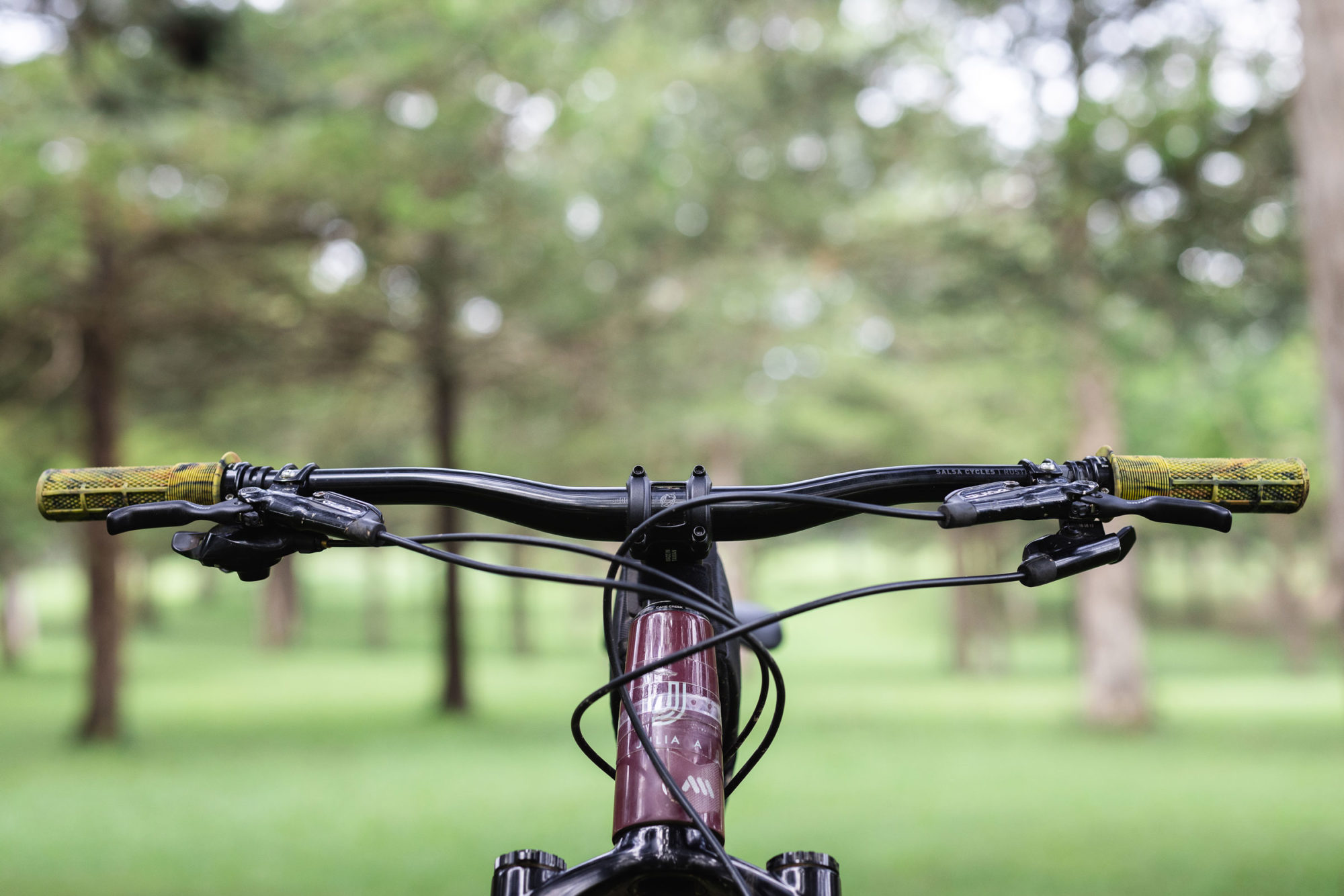
Flat bars are my go-to for 95% of my bikepacking trips, but on the off-chance that I’m doing a gravel tour, my favorite drop bars are the Enve G Series Gravel Handlebar. At $400, they’re pretty gucci, but knowing how much the subtle flare and multiple hand positions reduce the wear and tear on my upper body, it’s worth every penny. My wrists are certainly grateful.
Ritchey WCS VentureMax
Lucas Winzenburg link
Made in Taiwan / 270 grams / $109.95 at Jenson
Amid the many great flat bars recommended here, I’ll be the odd one out and choose a pair of drop bars as my all-time favorites. That honor goes to the Ritchey WCS VentureMax, the bars that got me to love riding drops on chunkier terrain. Of course, they have their limits, but for long days of mixed-terrain riding that include a bit of rough stuff, they stand out from the many others I’ve tried.
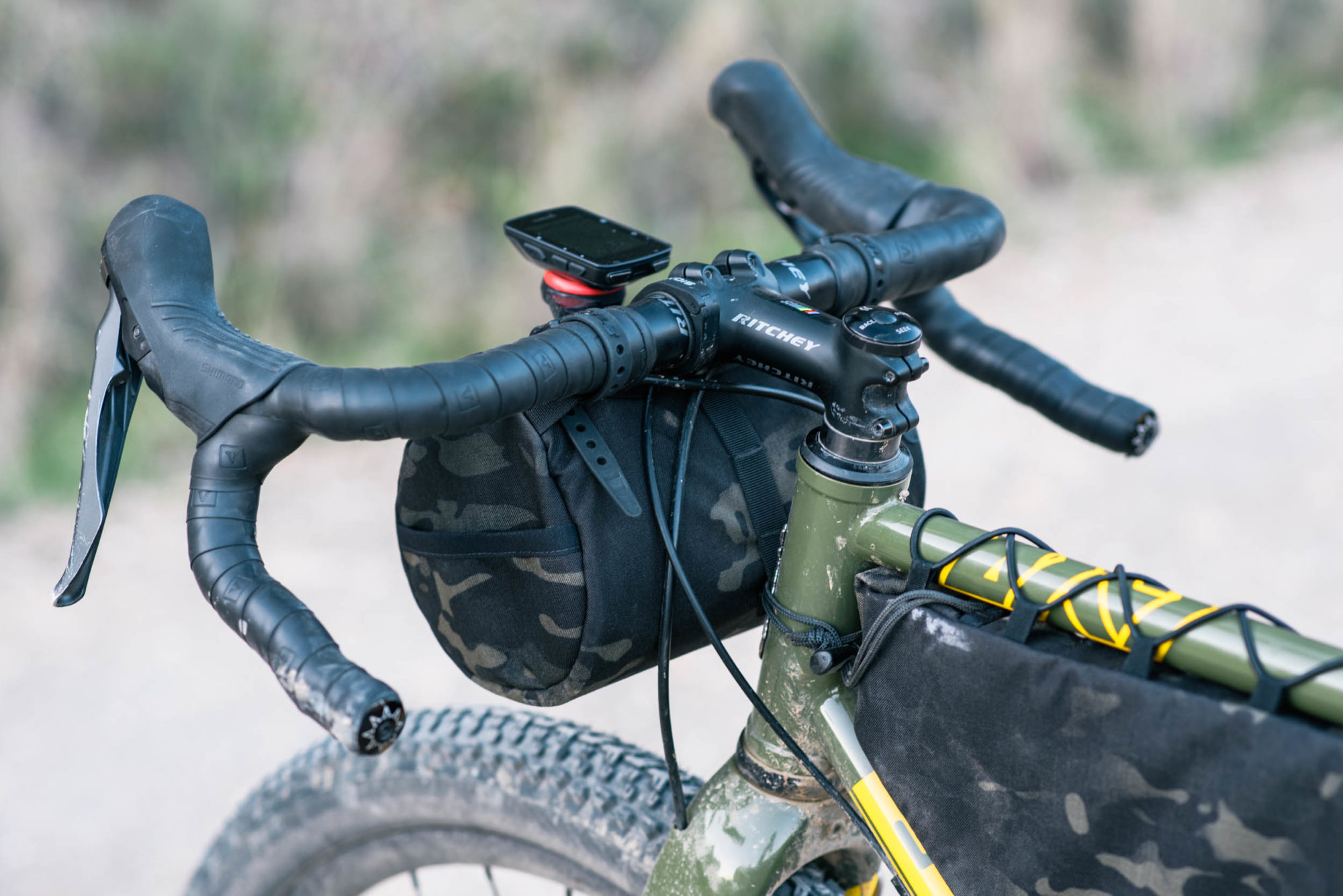
Because I prefer a more upright riding position, I appreciate the slightly below-average reach (75mm) and shallow drop (102mm). The former gives me some freedom to move my hands around the ramps and hoods without ever feeling too stretched out, and the latter makes riding in the drops actually comfortable. And although it’s not beautiful, the funky bio-bend in the drop somehow convinces me to stick around down there for longer and helps alleviate wrist pain in the process. The partially flattened tops are ideal for taking breaks to ride in an alternate position, too.
I’ve not fully caught on to the ultra-wide drop-bar trend (or maybe I missed it entirely?), and I’m quite happy with around a 46-48mm drop bar on my all-road touring bike. For folks who prefer something narrower or wider, the VentureMax (in various models at different price points, including XL and Carbon) is offered in a range widths from 38mm to up 52mm. Lastly, the 24° of flare feels just about perfect to me, putting my wrists into a fairly neutral position that I never have to think about. In short, I can ride all day on these bars, which is saying something, as my wrists still tend to act up after a bad break in a crash several years back.
Surly Cheater Bar / Zipp SL70 XLPR
Joe Cruz link
Made in Taiwan / 400 grams / $100 at Jenson
I don’t feel like I’m picky when it comes to specific brands of handlebars, but I do have preferences when it comes to cockpit format. I like flat or low-rise bars with a modest bend, and I like drop bars with a shallow drop. In both cases, I use bars that are probably narrower than is fashionable these days. On the two ATBs I ride most, one has a 680mm titanium flat bar with a 7° sweep, and on the other a Surly Cheater bar (780mm) with its 11° sweep. On my gravel bikes, I have the fairly roadie feeling Zipp SL70 XLPR and I have also liked Ritchey’s Beacon bars.

All of my multi-month trips have been on flat or riser bars without bar ends or aero bars. For ATB riding, radical alt-bar bends aren’t my thing. I find them plenty comfortable, but my deftness and control in technical trail sections just suffer too much. Having my hands in the swept-back position leaves me baffled. Alas, my ability to pull up over obstacles and to find an equilibrious rhythm at low speeds on churning, rocky terrain is compiled into a nervous system tuned 35 years ago. Shrug. (It is amusing, though, to read the persistent experiment to lift my arms in front of my body to check to see the “natural” position of my hands. The position of an empty hand has very little bearing on the best position it should be in for grasping a particular object with specific force dynamics.)
We Are One Da Package
Miles Arbour link
Made in Canada / 338 grams (with stem) / $399 CAD at We Are One
When talking all-time-favourites, it’s impossible for me not to include the made-in-Canada carbon handlebar from We Are One. Their handlebar/stem combination, known as Da Package, found a place on my original Why S7 dream build in 2019. Thinking back over the years, I don’t think I’ve ever uninstalled the bar, which means it’s logged more mileage than any handlebar I’ve ever used. The bar and stem were born from a collaboration with Germany’s 77Designz, with a goal to create a package that sheds all unnecessary weight without compromising strength or comfort. The handlebar portion, which is handmade in Kamloops, British Columbia, is a 800mm wide carbon bar with 5° upsweep, an 8° backsweep, and three rises: 35mm, 27.5mm, and 20mm.
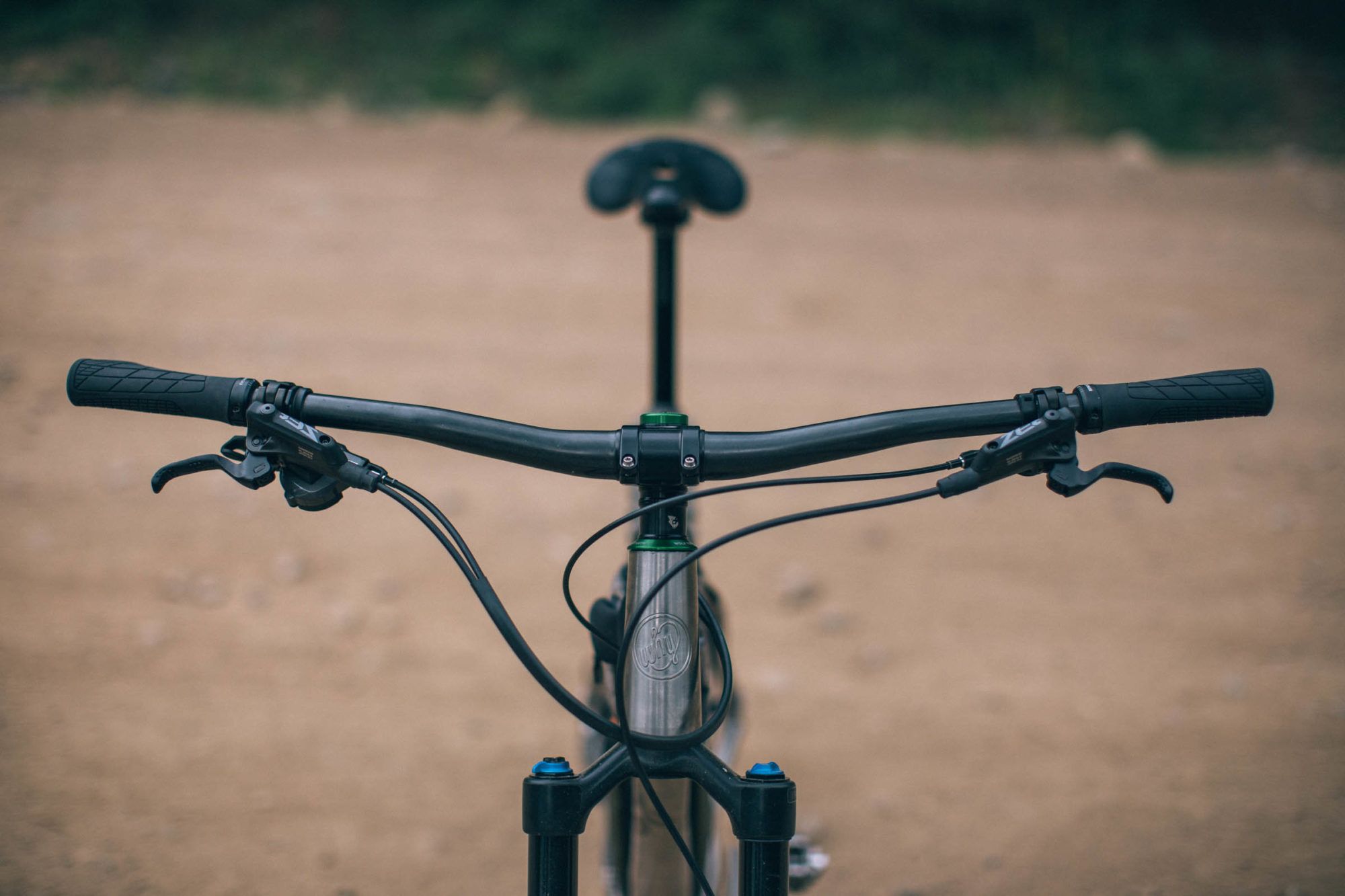
Da Stem, also machined at We Are One, is made from 7075 aluminum, comes with titanium hardware, and is offered in 35mm and 45mm lengths, weighing in at 320g and 338g respectively. As there is no face plate, the bar slides horizontally into the stem, and the two become one via an aluminum sleeve. The sleeve effectively eliminates any harsh interactions between bar and stem, a common problem when running carbon bars, spreading the clamping forces across the entire sleeve rather than a smaller section of carbon.
Besides being incredibly lightweight, Da Package has proven to be durable enough for everything I’ve thrown at it. It also offers a fairly traditional shape that matches up well with modern mountain bikes. Since my Why S7 has converted over from a 27.5+ shred sled to 29er cross-country rig, the lower rise works, but I’m almost ready to pick up the 35mm rise option for a slightly more upright position on other bikes. Considering the amount of mileage and handlebar bag straps it has seen, it’s surprising how fresh it still looks, and it isn’t showing any signs of wear or scuffing like most bars do after the first trip. I’d be remiss if I didn’t mention how expensive the handlebar is, even if it is justified, because unfortunately the We Are One brand will be out of reach for lots of us.
Salsa Guide 35.0 Carbon
Neil Beltchenko link
Made in China / $165 at Jenson
I have used a variety of handlebars over the years, some with massive amounts of sweep, others with limited sweep. And while many of us think of alt bars as the best style for bikepacking, I have found them to be more of an annoyance than anything. Bars like Jones Bars with massive amounts of sweep over the long haul have just given me more wrist pain and numbness. I find that a bar like the Salsa Rustler with 11° of backsweep or even the Salsa 35.0 bar with 8° of back sweep give me a better feel of the bike. Paired with some softer grips and a 20° rise, I find that these bars suit my style of riding much better than a bar with more sweep. I also found the sweet spot for width at 800mm. It fits me well, and also allows plenty of space on the bar for bikepacking accessories.
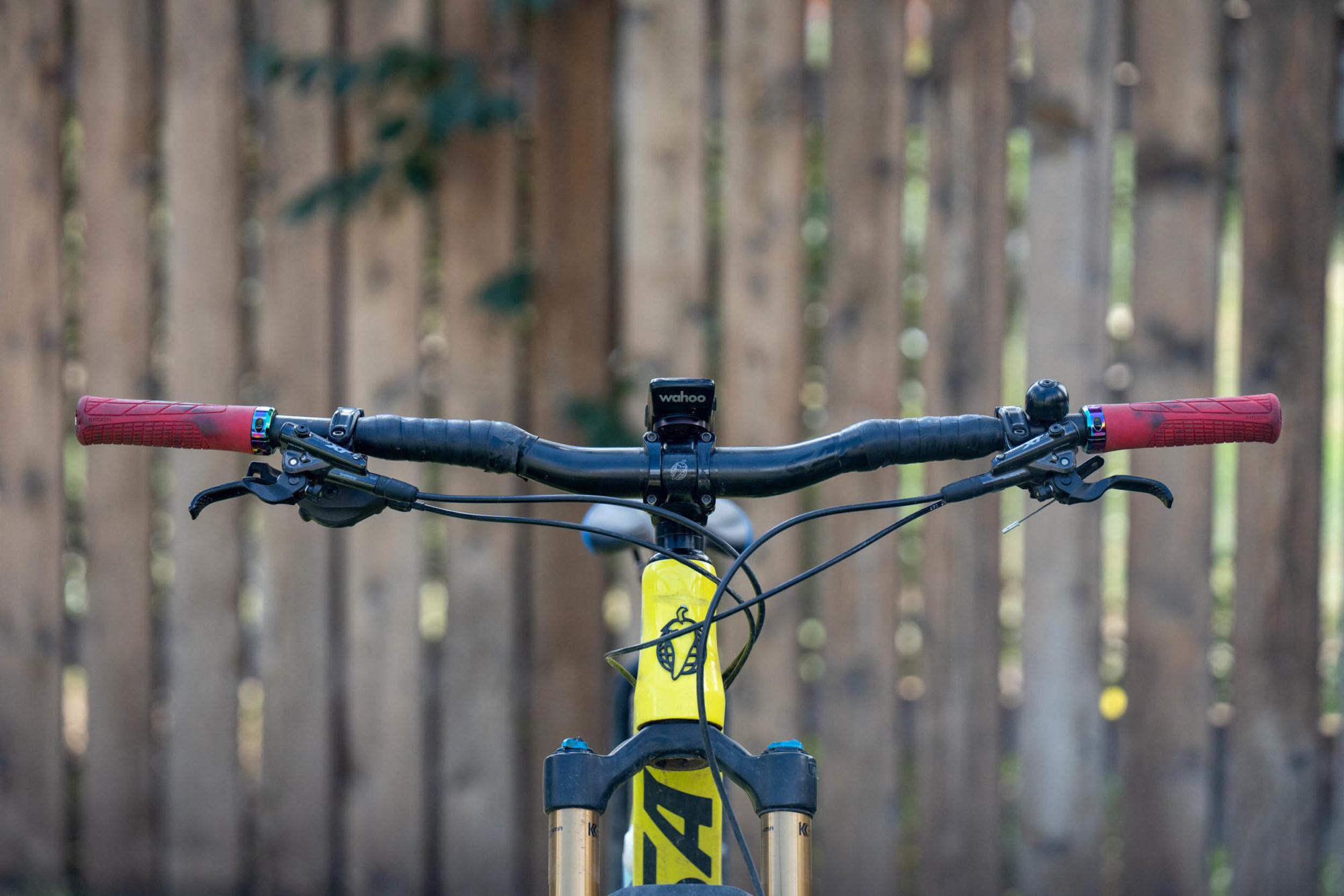
On the dropbar side of things, the ones I like the best are bars with a decent amount of width, 480mm+, and ones that have ample flare with a medium to short drop depth, for ease of entry into the drops themselves. I find myself typically riding singletrack or rough roads when I’m riding drop bars, so having this will give me a bit more stability and lots of space to throw cargo on the bar. I’m not a fan of bars with a massive amount of drop, while it may set me up for rough terrain well, it make me feel too separated from the bike. Two of my favorites are the Ritchey Venture Max XL, which happens to have a little backsweep, and the Salsa Cowchipper 50cm.
Obviously, bars are personal preference, but it’s hard to ignore a proper fit on your bike. I always tell people to pay attention to the reach of your bike and stem length. It’s hard to know if a bar will work for you unless you fit your bike and cockpit properly.
What are your favorite handlebars, or what do you think make the best handlebars for bikepacking and bike touring? Let us know in the conversation below.
Related Content
Make sure to dig into these related articles for more info...
Please keep the conversation civil, constructive, and inclusive, or your comment will be removed.






